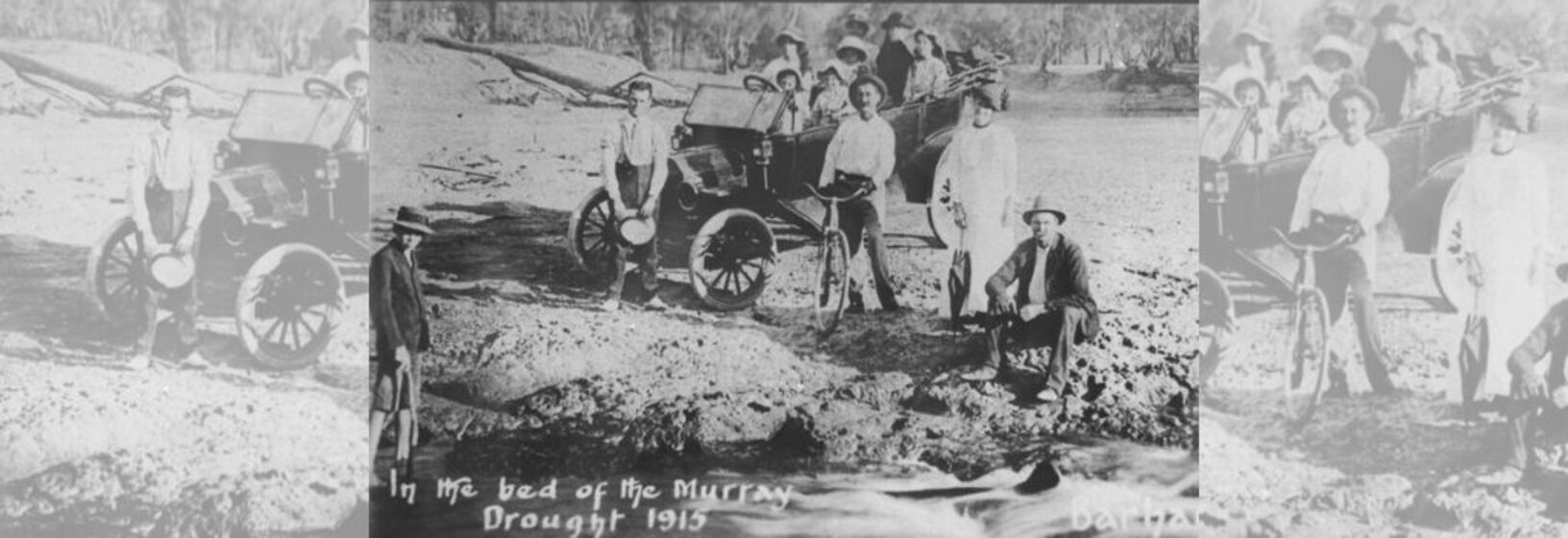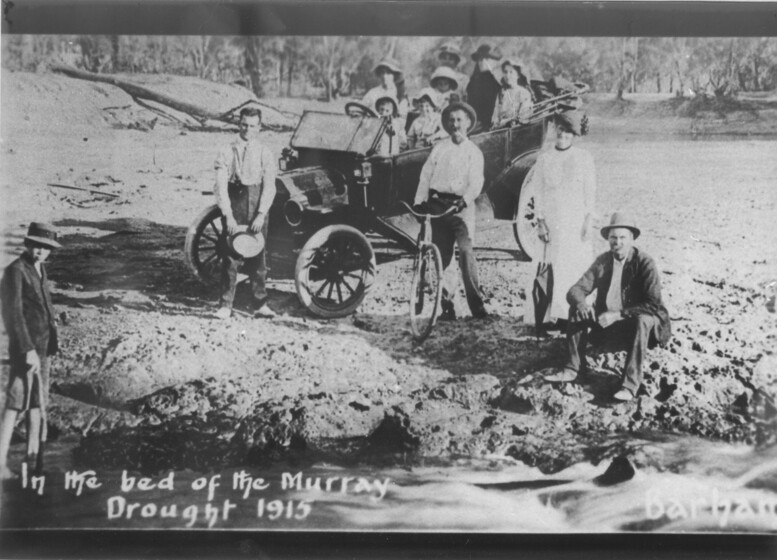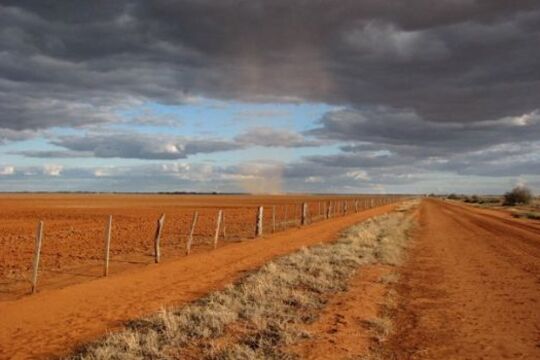Drought Stories
“The social impact it has is huge, but the footy club survives," says Charlie Gillingham, mixed farmer from Murrabit.
In this story the community talks about drought: its social impact, resilience, changes to farming practises, changing weather patterns and water trading.
The median annual rainfall of the Wimmera and northern plains of Victoria is 420mm. But this median does not convey the deluges that sometimes double the figure, or the dry spells that can halve it. Like semi-arid places elsewhere, the climate cycle of this region is variable.
Aboriginal people have had thousands of years to adapt to the fluctuations, whilst recent settlers are still learning.
The introduction of the Land Act of 1869 accompanied by the high rainfall La Niña years of the early 1870s brought selectors to northern Victoria and the Wimmera. A series of dry years in the 1880s initiated storage and channel projects to assist them to stay.
Irrigation was introduced in 1886 to settle the northern plains and was expanded under closer settlement legislation. The drought years from 1895 to 1902 came to be known as the Federation Drought. Water supplies dried up completely in the El Niño years of 1914 and 1915 and people took the opportunity to picnic in the empty bed of the River Murray.
Drought hit again during World War Two, and then in the period 1965-8. The drought of 1982-3 was short but devastating. Our most recent drought, lasting more than a decade, broke late in 2010 with extensive flooding.
Policy responses have changed over the years and with the recent onset of human induced climate change, continual adaptation will be required.
In 2009, the History Council of Victoria captured resident’s experiences in the project titled Drought Stories: a spoken and visual history of the current drought in Victoria. There were two aims to the project: to create a historic record of the experience, and to strengthen community capacity in rural and regional areas through telling and listening to local stories.
Two types of collections were produced: Drought Stories Local Collections, held by historical societies, and the Drought Stories Central Archive, a selection of interviews held by the State Library of Victoria.
The History Council of Victoria believes that the project material provides a rich resource to assist researchers understand Australian society at a crucial and revealing stage of adjustment to the Australian environment.
Legislation and other land records are held at the Public Record Office Victoria.






















